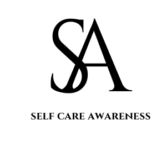
- What Is a Stress Rash?
- How Does Stress Impact Skin?
- The indications of Stress Rash
- Common stress rash areas
- Why stress causes rashes
- Identifying Stress Rash vs. Other Skin Conditions
- Treatment Options for Stress Rashes
- Lifestyle and natural remedies
- Preventing Anxiety Rashes
- Conclusions
Introduction
Stress has become standard in today’s fast-paced culture. From tight job deadlines to personal issues, our bodies frequently respond to mental and emotional stress in unexpected ways. A rash is one of the less well-known but very apparent responses. But does stress produce a rash? The short answer is “yes.” This thorough guide will examine how stress affects the skin, the types of rashes it may cause, and practical techniques to treat and avoid stress-related skin concerns.
What Is a Stress Rash?
A stress rash, or psychogenic rash, is a cutaneous ailment that develops in response to psychological stress. These rashes often present as red, itchy, and inflamed spots on the skin. Stress rashes are usually characterized by hives, which are raised, red welts that can occur anywhere on the body.
Stress rashes are sometimes mistaken for allergic responses or other dermatological diseases, although their underlying cause is the body’s stress response. Understanding this link is critical for properly treating and avoiding epidemics.
How Does Stress Impact Skin?
When the body is stressed, it stimulates the hypothalamic-pituitary-adrenal axis, which produces stress hormones such as cortisol and adrenaline. While these chemicals assist the body in responding to immediate danger, persistent or chronic stress can interfere with regular physical processes, including skin function.
The “stress hormone,” cortisol, can make skin more sensitive and reactive. It can cause irritation, damage the skin barrier, and increase oil production, leading to skin problems, including rashes.
The indications of Stress Rash
A stress rash’s appearance varies from individual to individual. Common symptoms include red or pink raised welts that are uncomfortable or burning. The afflicted region may swell and be heated to the touch. These lesions usually arise unexpectedly and vanish within hours or days.
In rare circumstances, stress can worsen preexisting skin diseases, including eczema, psoriasis, and rosacea. Thus, it is critical to distinguish between a fresh rash and a flare-up of an existing problem.
Common stress rash areas
Stress rashes may arise anywhere on the body. They are primarily present on the face, neck, chest, arms, and belly. The rash may also travel or alter places, especially in the case of hives. This might contribute to the confusion and worry around the disease, exacerbating the stress response.
Why stress causes rashes
Psycho-dermatology, which studies the mind-skin connection, has long linked stress to skin diseases. Emotional stress can disrupt immunological responses and exacerbate inflammation. It can also cause neurogenic inflammation, which occurs when nerve endings produce substances that cause itching and redness.
Furthermore, stress can cause behavioral changes, such as insufficient sleep, bad diet, and disregard for skincare regimens. These conditions might impair the skin’s defenses, making it more susceptible to irritation and rash formation.
Identifying Stress Rash vs. Other Skin Conditions
While stress can cause rashes, not all rashes are stress-related. It is critical to distinguish a stress rash from other skin ailments such as allergic responses, contact dermatitis, infections, or autoimmune diseases.
A dermatologist’s physical exam can help make an accurate diagnosis. Additional studies, such as skin biopsies or allergy testing, may be required.
Treatment Options for Stress Rashes
Managing a stress rash entails addressing physical symptoms and the underlying mental causes. Hydrocortisone and antihistamine lotions, available over the counter, can help alleviate itching. Calamine lotion is effective in relieving inflammation.
Systemic relief is available from oral antihistamines like cetirizine and loratadine. In more serious situations, a doctor may prescribe corticosteroids. Addressing stress is critical. Deep breathing exercises, meditation, cognitive behavioral therapy, regular physical activity, proper sleep, and a good diet are all effective stress-management strategies.
Lifestyle and natural remedies
Natural therapies can also help relieve stress rashes and improve overall skin health. Aloe Vera contains natural anti-inflammatory qualities that help decrease redness and swelling. Oatmeal baths are proven to soothe sensitive skin, and lavender and chamomile oils relax and soothe skin.
Lifestyle modifications, such as limiting coffee intake, screen time, and sticking to a steady daily schedule, can help with stress management and skin health.
Preventing Anxiety Rashes
It is always better to prevent than to cure. Regular stress-relieving activities such as yoga or writing might be beneficial. Hydration and a balanced, antioxidant-rich diet improve skin health. A regular skincare regimen using mild products and avoiding recognized irritants such as allergens and severe weather will help to reduce flare-ups.
Conclusions
So, can stress lead to a rash? Absolutely. Your skin reflects your inner emotional condition, and stress may cause painful and ugly rashes. First, we must understand how stress affects skin issues and how to cure and prevent them.
You can maintain your skin healthy and attractive no matter what happens by using a comprehensive approach incorporating medical therapy, natural cures, and stress management approaches. If you’re experiencing reoccurring skin problems and feel stress is to blame, don’t wait for expert help and begin your road to cleaner, calmer skin.
